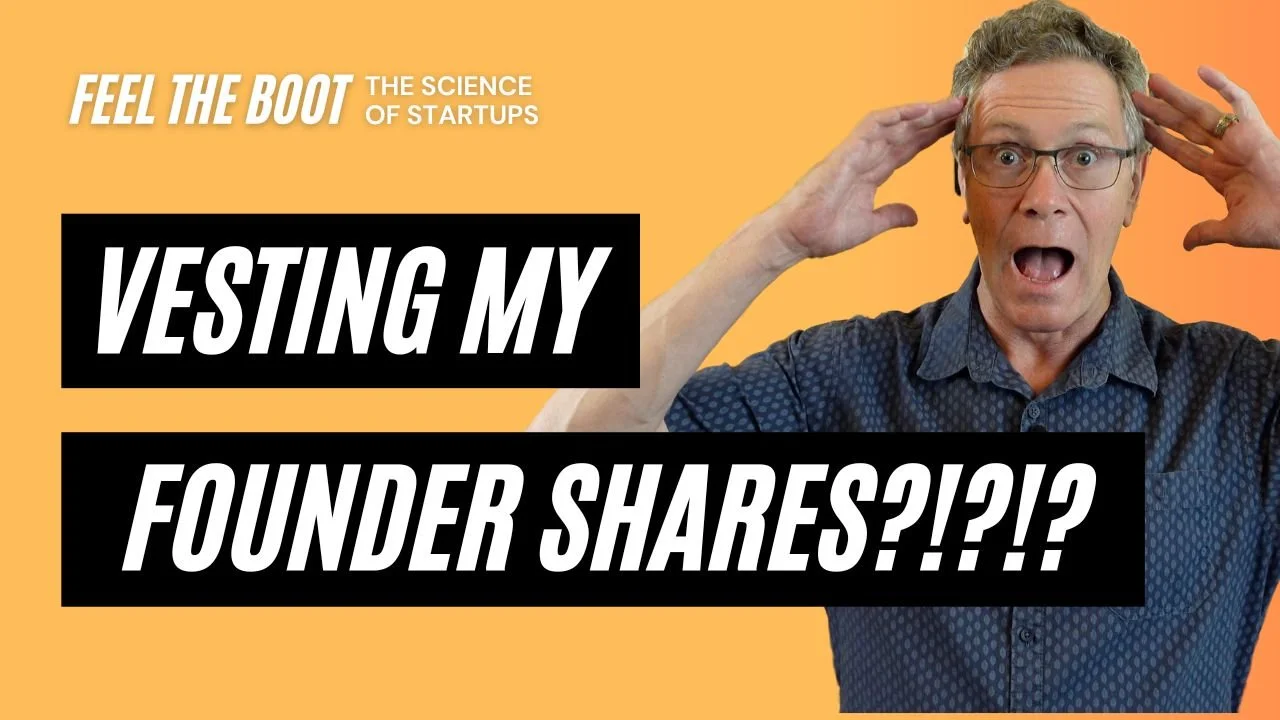79. Cofounder Vesting 😭 Handling founder shares when things go wrong
Founder stock vesting can be a touchy subject. If an investor asks you to vest your shares, you might worry that you will lose control or that they will take your ownership and kick you out.
Fortunately, most stock vesting agreements are fair and can largely avoid these concerns. Vesting can even protect you in some cases.
In this article, I will explore how founder stock vesting operates under a few different scenarios. To keep things interesting, let's look at an imaginary company founded by Tony Stark (Iron Man), Bruce Banner (The Hulk), Thor, and Loki and see how things work for them.
Tony founded Acme Vengeance, a defense contractor, on his own. After a while, he brought in Bruce. They recently decided to invite Thor to join the company, and he asked to bring along his younger brother, Loki.
Initial ownership breaks down as follows:
40% Tony Stark
25% Bruce Banner
25% Thor
10% Loki
The company has four cofounders, so Tony suggests they should set up a stock vesting plan. After some discussion, they come up with the following structure.
They agree that Tony will only need to vest 50% of his shares since he has been working in the company for several years. Bruce will vest 75% since he has also worked in the company for a while. Thor and Loki will vest 100% of their shares since they just joined the company. They use the most common vesting schedule: Shares in the plan will vest over four years, with 25% vesting at the end of the first year and the rest vesting monthly over the next three.
The cofounders own their unvested shares, but the company has a right to repurchase them. This means they are not losing control because they can vote all their shares, even if they are not vested.
Multi-cofounder startups often vest their founder stock to protect against some of them leaving early in the journey. For solo founders, investors usually push the vesting agreement. They want to protect themselves from founders who quit or fail to execute effectively.
You could imagine that Bruce Banner had a previous company. When his investors came in, they insisted that he vest his stock because he might Hulk out at any time, causing problems for the business.
"I am a god, you dull creature, and I will not be bullied by..."
It does not take long for Loki to get up to his usual tricks. He plays pranks on the other cofounders and generally disrupts operations in the business. After six months, Bruce finally loses control and smashes Loki.
Although they know Loki instigated this, they can't prove anything. But, the cofounders can't be allowed to toss each other around, so they ask him to leave. Because Bruce can't control his Hulk condition, they treat this as a medical issue and consider him a "good leaver." Bruce will keep the 25% of his shares that were not under the vesting plan. The company buys back the rest at its par value of $0.00001 per share, which is not much cash.
The board could have chosen not to exercise the buyback option, which would have let Bruce keep all his stock. However, you generally don't want uninvolved former employees owning a substantial fraction of the company, so this is rare. They could also choose to pay fair market value for the stock, but few startups have the cash to do that, and it sets a bad precedent.
A year later, Tony finally catches Loki selling the company's inventions to their competitors. He has also been creating a toxic environment in the business.
The board immediately fires Loki and treats him as a "bad leaver." Like with Bruce, the company buys back Loki's unvested shares at the par value. Fortunately, they also put in a provision that they could buy back even vested shares at fair market value. The board wants no connection at all to Loki, so they elect to buy him out completely. Not all vesting agreements have this option.
Some vesting agreements specify how the company will handle "good leavers" and "bad leavers." It might state that, for bad leavers, the company can buy back all the shares at par value, wiping them out. The problem is clearly defining what counts as good or bad, and arguments about it can quickly lead to litigation. Most US companies don't try to make this distinction, but you will see it in some European agreements.
Now the company just has two cofounders, Tony and Thor, but they are continuing to grow well. Red Skull Enterprises approaches them with an offer to acquire Acme Vengeance at an appealing valuation. The board supports the transaction, so they start negotiating terms.
The original vesting agreement specified "single trigger acceleration," which instantly vests all the stock when the company is acquired. However, Red Skull wants to ensure that Tony and Thor stay active in the company, so it asks them to amend the agreement to use "double trigger acceleration." Double trigger only accelerates the vesting if the cofounder leaves involuntarily after the acquisition. If Thor quits after a few months, he would only keep the shares that have vested at that time. However, if Red Skull fires him, everything immediately vests. Thor and Loki are excited about the deal, so they agree to the change.
In this case, founder stock vesting benefited the company and the remaining founders. Without it, Bruce would have kept his 25%, and they would still be stuck with a disgruntled Loki owning 10%. Bruce received fair compensation for the time he worked in the business, and the company was able to sever all ties to Loki.
Conflicts between cofounders are distressingly common. Founder stock vesting agreements can avoid legal fights when one of them needs to leave, whether voluntarily or involuntarily.
Even as a solo founder, you will probably end up with a vesting agreement imposed by one of your early investors. Understanding how it works can help you avoid abusive terms in the contract.






